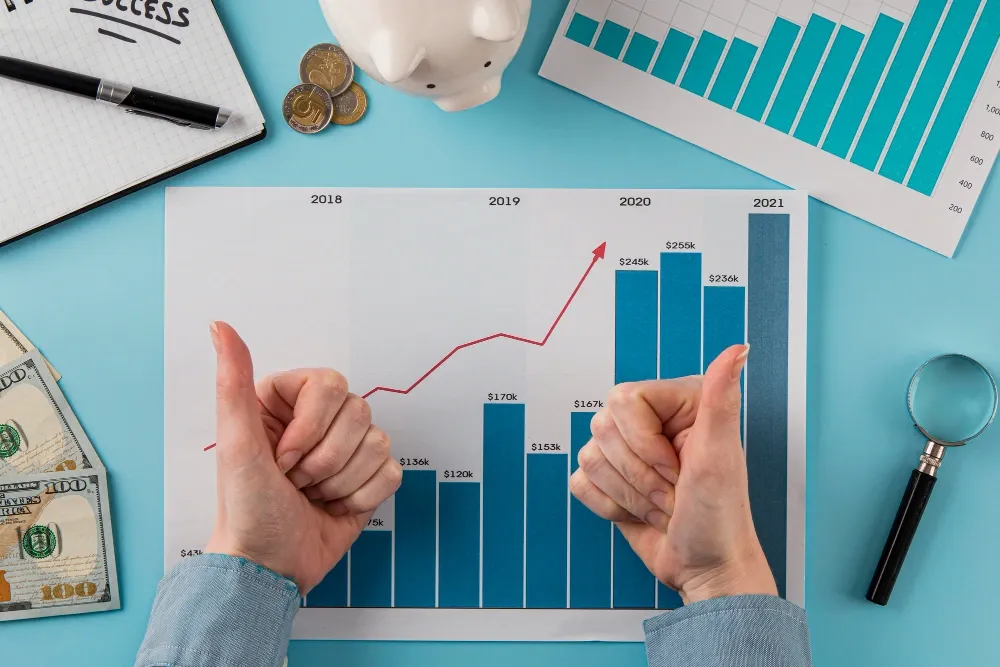Many beginner investors often hear the term capital gain but don’t fully understand what it means. In simple terms, capital gain is the profit you make when selling an asset, such as a stock, at a higher price than what you originally paid. Alongside dividends, this is one of the main ways investors earn money from stocks.
For new investors, understanding capital gain is crucial, since your investing strategy will largely depend on your expectations about future stock price growth. Let’s break it down in detail.
What Is Capital Gain?
Capital gain is the positive difference between the selling price and the purchase price of an asset. For example, if you buy a stock at Rp1,000 per share and sell it later at Rp1,500 per share, your capital gain is Rp500 per share.
On the flip side, as explained by Investopedia, if you sell the stock at a lower price than you bought it, the result is called a capital loss. Capital gain, therefore, represents how much a stock has appreciated in market value.
Simple Examples of Capital Gain
Imagine you purchase 10 shares of Apple at USD 100 per share. Your total investment is USD 1,000. A year later, Apple’s stock price rises to USD 130 per share.
If you sell all your shares, the total proceeds will be USD 1,300. Your capital gain is USD 300.
In another example from Indonesia, an investor buys bank shares at Rp5,000 per share. After a few months, the price climbs to Rp6,200. If sold, the investor earns a capital gain of Rp1,200 per share. These examples show how even beginners can profit from the difference between purchase and selling price.
Capital Gain vs Dividends
Although both provide returns, capital gains are not the same as dividends. According to Investopedia:
- Capital Gain: comes from an increase in stock price. Investors must sell shares to realize the profit.
- Dividend: a portion of company earnings distributed to shareholders, usually in cash or additional shares.
That means capital gain is more active — requiring a sell action — while dividends are passive, since you only need to hold the shares.
Factors That Influence Capital Gains
Several elements can drive stock prices higher and create capital gains:
- Company performance: Rising earnings and strong financials often push prices up.
- Market sentiment: Positive news such as product launches, acquisitions, or large institutional investments.
- Macroeconomic conditions: Strong economic growth, low interest rates, or supportive government policies.
- Supply and demand: The more investors buying, the higher the price climbs.
- Global factors: Commodity prices, geopolitical conflicts, or global crises.
- Investor psychology: Sometimes, hype or expectations move prices faster than fundamentals.
Types of Capital Gain: Realized vs Unrealized
There are two main forms of capital gain:
- Realized Capital Gain: profit locked in after selling the stock.
- Unrealized Capital Gain: paper profit because the stock hasn’t been sold yet. If prices drop before selling, the gain may disappear.
This distinction matters because beginners often think they’re already “making money” when it’s only an unrealized gain.
Strategies to Maximize Capital Gain
- Choose fundamentally strong stocks: companies with stable businesses and healthy financial reports.
- Adopt a long-term approach: holding stocks for years is generally safer than short-term speculation.
- Diversify your portfolio: spread investments across sectors to reduce risk.
- Use basic technical analysis: watch price trends, support-resistance, and trading volume.
- Set profit targets and stop-loss orders: helps avoid emotional decisions.
- Understand sectors: tech stocks tend to be volatile, while consumer goods are usually steadier.
Capital Gains and Taxes
In many countries, including the U.S., capital gains are taxed depending on the holding period:
- Short-term gains (under 1 year): taxed at higher rates.
- Long-term gains (over 1 year): usually enjoy lower tax rates.
For Indonesian investors buying U.S. stocks through apps, these taxes are often automatically calculated under regulations, so you don’t need to figure it out manually.
Conclusion
Understanding what capital gain is helps you see how investors make money from price appreciation. Unlike dividends, capital gains only materialize when you sell at a higher price. Many factors affect them — from company earnings to global events.
For beginners, it’s equally important to remember that prices can fall. A solid strategy, diversification, and discipline are the keys to maximizing gains while minimizing losses.
Start your investing journey today with Gotrade. Access top global stocks like Apple, Tesla, and Microsoft with as little as 1 U.S. Dollar and enjoy the opportunity to capture capital gains from the U.S. market.
Download the app on iOS or Android now!
FAQ
1. What is capital gain and how do you calculate it?
Capital gain is the profit from the difference between selling and buying price. For example, if you buy at Rp1,000 and sell at Rp1,500, the capital gain is Rp500 per share.
2. Are dividends considered capital gains?
No. Dividends are a company’s profit distribution, while capital gains come from price increases. They are two separate sources of return for investors.
Disclaimer:
Gotrade is the trading name of Gotrade Securities Inc., which is registered with and supervised by the Labuan Financial Services Authority (LFSA). This content is for educational purposes only and does not constitute financial advice. Always do your own research (DYOR) before investing.




